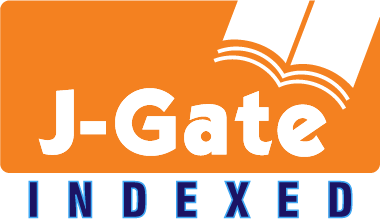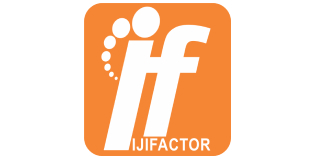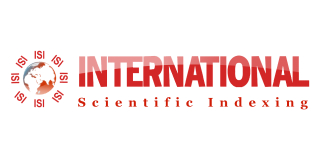Workforce today articulates more about their needs. Employees desire the best of everything – competitive salaries, comfortable and inspirational lifestyles, job security, career enhancement options, work-life balance, and so on. Competition for talent is ever increasing and organizations need to have well-defined philosophies and strategies to help them develop innovative ways of tapping intrinsic motivation of employees by engaging their hearts and minds. While many organisations are struggling to make sufficient progress in this direction, there are organizations that have institutionalized robust practices and effective processes in different people practice areas that go a long way in positively impacting employee perception. In this regard, two types of rewards are identified, and they are intrinsic reward and extrinsic reward. Extant research showed that reward can affect job satisfaction and thereby employee performance, so this study proposes a new framework based on mediating role of job satisfaction. India’s Best Companies for Rewards and Recognition was conceptualized to recognize companies who are leading the way in the area of Rewards and Recognition for us learns from. Human resources are the most important among all the resources an organization owns. To retain efficient and experienced workforce in an organization is very crucial in overall performance of an organization. Motivated employees can help make an organization competitively more value added and profitable. The present study would be an attempt to find out the major factors that motivate employees and to show relationship among reward, recognition and motivation while working within an organization. The data were collected from employees of diverse type of organizations to gain wide representation of sectoral composition. The participation in survey was voluntary and confidentiality of responses was ensured. The statistical analysis showed that different dimensions of work motivation and satisfaction are significantly correlated and reward and recognition have great impact on motivation of the employees. Implications of the study for managers and policy makers in the context of human resource practices have been discussed. Limitations and guidelines for future research are also provided. A meta-analytic review of all adequately designed field and laboratory research on the use of incentives to motivate performance is reported. Team-directed incentives had a markedly superior effect on performance compared to individually- directed incentives.
by :
Sheethal Kumar K V, Anila D Shetty
15 February 2019
:
Journal Articles
: Volume : Volume 5 Issue : Issue 1 -February
Water as a basic human need is a limited natural resource and is very precious in nature. It is estimated that among 1360 million cubic kilometres available, only 0.2 million cubic kilometres is fresh water. In Kerala, 85 percent of drinking water needs are met from ground water. In recent decades human demand and misuse of water continuously increased and shortage of water is a global issue. The careless usage and less availability of water indicate the need for water literacy among people. The study revealed that rural households in Kerala are highly water literate and they ensured environmental sustainability as their responsibility.
by :
Karunakaran N, Sreya K
15 February 2019
:
Journal Articles
: Volume : Volume 5 Issue : Issue 1 -February
To formulate efficient and articulated future cocoa policy prescriptions, and ensure the continuous contribution of the subsector to poverty reduction, income generation and growth of Africa’s agricultural sector, the present research empirically examined the global competitiveness of Africa’s cocoa export during the spanning period of 2000-2013. The used dated data were sourced from FAO and UNCTAD databases. Export trends and indices of the revealed comparative advantage, as well as Trade Mapping (TM), were examined for cocoa beans, cocoa butter, cocoa paste and cocoa powder/cake. Empirical findings showed that Africa has only revealed comparative and competitive advantages in the exportation of cocoa primary product and disadvantage in the comparative and competitive status in the exportation of its secondary cocoa products. Furthermore, Africa is among the winner group with it controlling a large chunk of the market despite the decline in the export market of cocoa during the studied period. Hence, in order to enhance Africa’s relative comparative and competitive advantages in the exportation of cocoa products and its continuing presence in the world markets, Africa should improve on the quality of its cocoa products keeping in-view the best marketing grade and standardization for cocoa products in the global market. Also, Africa should invest more in post-harvest technologies to have a breakthrough in the secondary sub-sectors of cocoa via value addition, thus increasing its global share in the market which in turn would enhance its foreign exchange earnings from the exportation of cocoa.
by :
Sadiq M S, Singh I P, Lawal M,Danjuma B
15 February 2019
:
Journal Articles
: Volume : Volume 5 Issue : Issue 1 -February
The activity of important radionuclides 232Th, 226Ra and 40K were analysed in twelve medicinal plants collected from Mangalore and surrounding region by gamma spectrometry. The activity in the representative soil sample is also measured in order to study the transfer of radionuclides from soil to plant. In plant the average values of 232Th, 226Ra and 40K activity were found to be 0.8 Bqkg-1, 5.0 Bqkg-1 and 37.1 Bqkg-1 respectively. In soil the average values of 232Th, 226Ra and 40K activity were found to be 54.7 Bqkg-1, 64.2 Bqkg-1 and 384.3 Bqkg-1 respectively. The average values of transfer coefficient for 232Th, 226Ra and 40K were found to be 0.02, 0.08 and 0.10 respectively. The 232Th activity was below detection level for most of the plant samples, though the activity was significant in soils associated to these plants. The significant activity of 226Ra in both plant and associated soil shows the higher root uptake of this radionuclide from soil. All the plants and associated soils showed significant 40K activity. The plant Mamia suregia showed higher transfer coefficient for all the three radionuclides. The plant can be used as bioindicator for the future monitoring of these radionuclides. The absorbed gamma dose rates prevailing in the study area were also measured using portable scintillometer. The results of these systematic investigations are presented and discussed in this paper.
by :
Prakash V, Narayana Y
15 February 2019
:
Journal Articles
: Volume : Volume 5 Issue : Issue 1 -February
This empirical research investigated the future outlook of Nigerian Agricultural Sector Growth in the light of global financial developments using linear and symmetric price transmission mechanism model (ECM). The study made use of annual time series data covering GDP-Agriculture and its subsectors which spanned from 1990-2012. The findings showed that long-run association exit between agriculture and its sub-sectors with the mother sector establishing long-run equilibrium with its sub-sectors, though the convergence rate was moderate as indicated by the attractor coefficient. Furthermore, results showed that all the sub-sectors have positive influence on GDP-Agriculture with crop sub-sector having a lead influence when compared to other subsectors. Therefore, the study recommends that government should adopt adjustment strategies that hinges on shoring-up gross agriculture revenue to compensate for the dwindling oil revenues given that the prospect for the country economy depend on the policies articulated for the medium-to-long term and the seriousness with which they are implemented.
by :
Sadiq M S, Singh I P, Grema I J
15 February 2018
:
Journal Articles
: Volume : Volume 4 Issue : Issue 1-Feb. 2018



